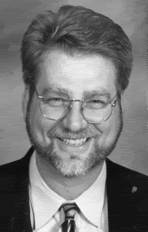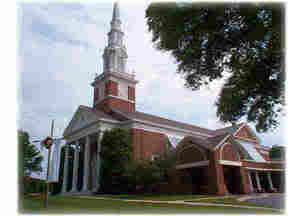a few days on the trail
So the last week began early last Sunday morning. I drove an hour and fifteen minutes to our church in Andrews, in time to be there at nine o'clock to meet some of the members. It turned out to be a conversation with some of the key leaders of that church over coffee and donuts. I then taught a Bible Study on John 15 for the adults in the sanctuary. Afterwards, Mike a good friend from divinity school preached an excellent sermon on Jesus' parable on the laborers in the vineyard (matthew 20). The service ended and a few people came to say hello. One man knew about my great-grandfather, who had taught at Piedmont College. Another talked about Donald Davis, the well-known storyteller who once served this church. Another woman said, very simply, "we like our minister."
This last comment is code language for a district superintendent: "do not move our minister!". I assured her that I was grateful to hear that. There is a general maxim that if the congregation is happy and the pastor is as well, the conference intervenes only when there is a compelling strategic need in another place. Of course, the mission is also important. Andrews is probably one of the more economically stressed communities in western North Carolina, and the Andrews Church has over the past few years offered a meal for the community on Thursday evenings. They serve large numbers, including families with children who would otherwise be hungry. One man indicated that he would be making the meat loaf for the meal this Thursday and invited me back!
I then traveled farther west, from Andrews, through Murphy to a small church on a hillside where, in mid-afternoon, we held a charge conference for six small congregations. A charge conference is the annual gathering that connects the local church with the district, the annual conference and the denomination. When a charge conference is held for one church, the district superintendent represents these relationships; when several churches are present, the relationships are also visible in the people and churches represented.
We approved the lay leadership for these churches. This has become a greatly simplified exercise over the last few years, and in many small churches a few people must necessarily share these roles. We also adopted the clergy salaries. In these six churches most of the clergy are bi-vocational, and really serve churches as a labor of love and as a response to a very real calling. These six churches are the very western most congregations in our state. I led a Bible Study with them, again from John 15, and then we all went downstairs to a fellowship meal that had been prepared for us. I sat with one of the pastors and a couple who have moved from Florida (where he was a police officer) to the area.
I then drove to my last appointment for the day, the charge conference at Murphy. There was a strong gathering of folks in the sanctuary. Murphy is the county seat of Cherokee County, and the church sits on the top of one of the highest peaks in the area. It is a beautiful sanctuary and the congregation draws people from a broad region. After our meeting, I drove fifteen miles to Hayesville, where I spent the might at the Hinton Rural Life Center.
The Hinton Center was established fifty years ago to strengthen the rural churches and the lives of people in the region. Hayesville is situated around Lake Chatuge, an absolutely beautiful body of water with mountains rising in the middle of it, bordering the North Carolina-Georgia line. My room was very comfortable; at the same time, it had no television or radio (appropriate for a retreat center).
The previous few days had included a demanding schedule: recording sermons for Day One in Atlanta, an annual conference meeting in Charlotte to work on the transition from fifteen to eight districts (already approved in June), and two days of meetings with the Duke Divinity School Board of Visitors in Durham. In each of these places I had enjoyed time with close friends, and participated in God's mission beyond my own setting; at the same time, those days formed a sequence which led into several days of charge conferences. I had also read the evaluations by the congregations of the pastors I would be meeting, and their materials related to the annual meetings. In a couple of these churches there is real conflict; in one there were irregularities related to financial accountability. I was hoping to be present to each church while I was with them.
So I slept very soundly that night in the Hinton Center, and later the next morning than I had in weeks. I took a long walk that morning, up to the outdoor Chapel and then down to Lake Chatuge. I met the pastors who serve the five churches in Clay County. I was pleased to discover that they know each other well and seem to have a collegial relationship. We enjoyed a great lunch at the Cottage Deli in Hayesville (seriously, I cannot recall a better deli restaurant). I then drove with the Hayesville pastor to see a house church they have begun (it is called "The Filling Station" and meets on Thursday evening). We then met with a couple who have donated a wonderful residence that will be the parsonage for the church. It is on the Hiwasee River, and is well stocked with trout!
That evening the five churches of the county came together for their charge conference at First UMC Hayesville. This church has a close relationship with the Hinton Rural Life Center. Later in the evening we approved the gift of the parsonage, and then I returned to my room. Again, no television (and no Monday Night Football!), so I read. I have been working my way again through Bonhoeffer's Life Together.
The next morning I had breakfast with one of of pastors, a clergywoman who serves at Hinton. A group had gathered who are a part of the First Parish Project, a Lilly Endowment funded cohort that provides a foundation for men and women entering this work. I then drove to Young Harris, Georgia, where I spent the morning with the campus minister, also an elder in our Annual Conference. Young Harris College is a beautiful United Methodist school set in the mountains, and it seems to be flourishing (and, I should say, the religious life there seems to be flourishing as well).
In the middle of the day I drove back through Hayesville, Murphy and Andrews to Robbinsville, where I would lead a five o'clock charge conference. I arrived early, so I found Coffee and Clay, which turned out to be a great place to work, enjoy the quiet, look at the pottery and drink coffee. It turned out that the proprieter (a potter) was also a part of the local United Methodist church where I would be later that day. The Robbinsville Church is the only United Methodist congregation in the country (in fact, 80% of the county is national park), and there I met a small group of very friendly people. We enjoyed a great meal, and then I led them through the required actions and, again, a Bible Study.
It was still daylight, and I drove out of Graham County, through the Nantahala Gorge (and by the Nantahala Outdoor Center) to Bryson City, where I would spend the night. I had not seen my wife in several days, so the next morning we met for breakfast in Sylva, not far away and located near Western Carolina University. A friend had recommended this place (The Coffee Shop) and it was very good. I then drove back to Bryson City, where I joined a conference call with a few other District Superintendents (from the Holston, Missouri and Michigan Annual Conferences, among others). This was a follow up to the District Superintendent orientation that had taken place in August, and it was helpful.
Around noon I met the pastor of the Bryson City Church. He had asked if I wanted to go on a hike of the day of our Charge Conference, and I had agreed. We drove a few miles to Deep Creek, just inside the Smoky Mountains National Park, which is by far the most visited and the most ecologically diverse of our parks. We walked at a good pace through the forest, made a loop and talked along the way. It was strenuous and beautiful!
We then returned to the church. I returned phone calls and email and prepared for the charge conference that evening, which would include four congregations. At around five o'clock members of the churches began to arrive. Two significantly, are Native American churches in Cherokee. At the meal I sat with one of their leaders who was instrumental in the reintroduction of elk into the Cataloochie area. Later we all moved to the sanctuary, where we shared out our different ministries.
As a new district superintendent much of the value of the last few days was simply forming relationships with leaders of congregations and meeting them in their own communities. Much of this happened over meals, and in conversations before and after meetings. These relationships often form the basis for being able, over time, to work through necessary changes in a congregation: responding to conflict, reaching the community in new ways, and receiving new pastoral leadership. After the charge conference concluded on Wednesday evening I greeted a few of the leaders, and again just before dark I made the forty-five minute drive home.




 Carter's Roost
Carter's Roost




0 Comments:
Post a Comment
<< Home